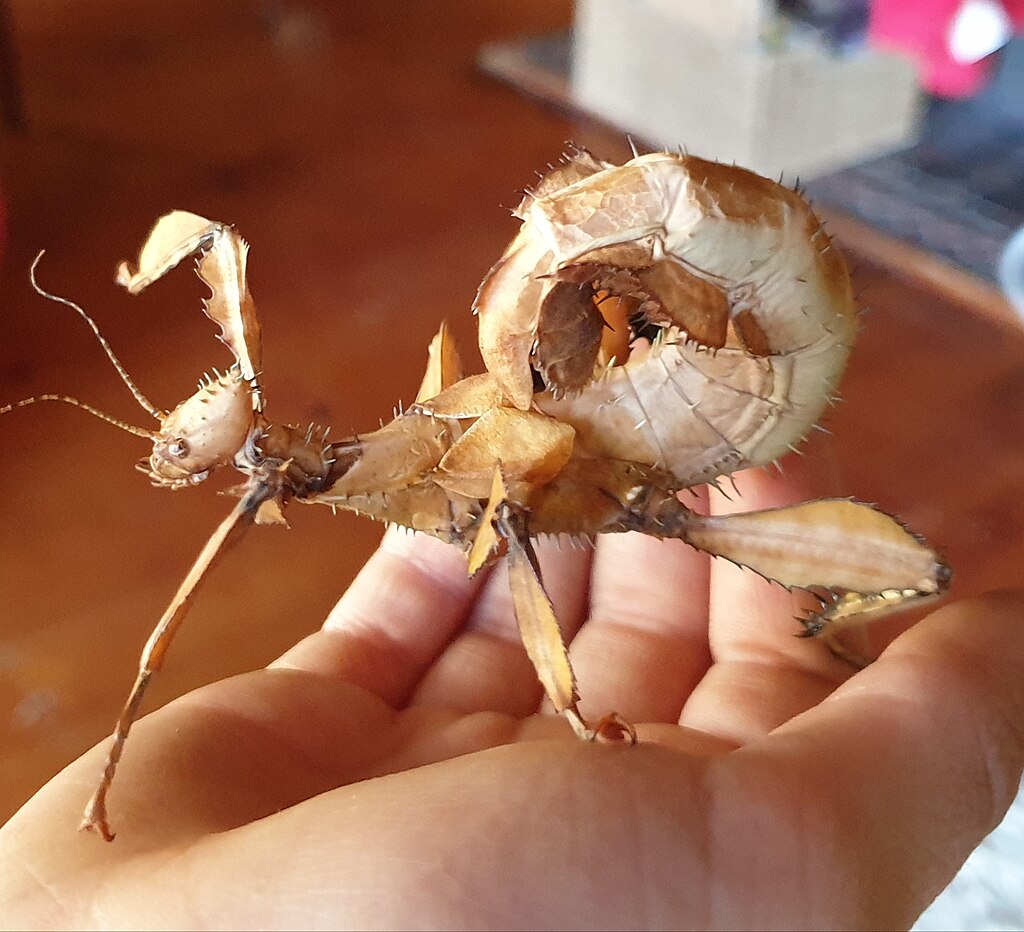Picture this: you’re walking down the street with your new companion trotting beside you on a leash, drawing stares and dropped jaws from every passerby. But this isn’t your typical golden retriever or fluffy tabby cat. Your pet has six legs, compound eyes that shimmer like jewels, and wings that catch the sunlight in ways that would make a butterfly jealous. Welcome to a world where insects have been scaled up to dog size, and suddenly the question isn’t whether you’d want one as a pet, but which species would make the most incredible companion. The idea might sound like pure science fiction, but when you really think about the incredible diversity of behaviors, intelligence levels, and social structures found in the insect world, some fascinating candidates emerge. From the loyal devotion of certain beetle species to the playful antics of jumping spiders, the insect kingdom offers personality traits that could rival any mammalian pet. Let’s dive into this bizarre but captivating thought experiment and discover which six-legged friend might just steal your heart.
The Gentle Giant: Rhinoceros Beetle
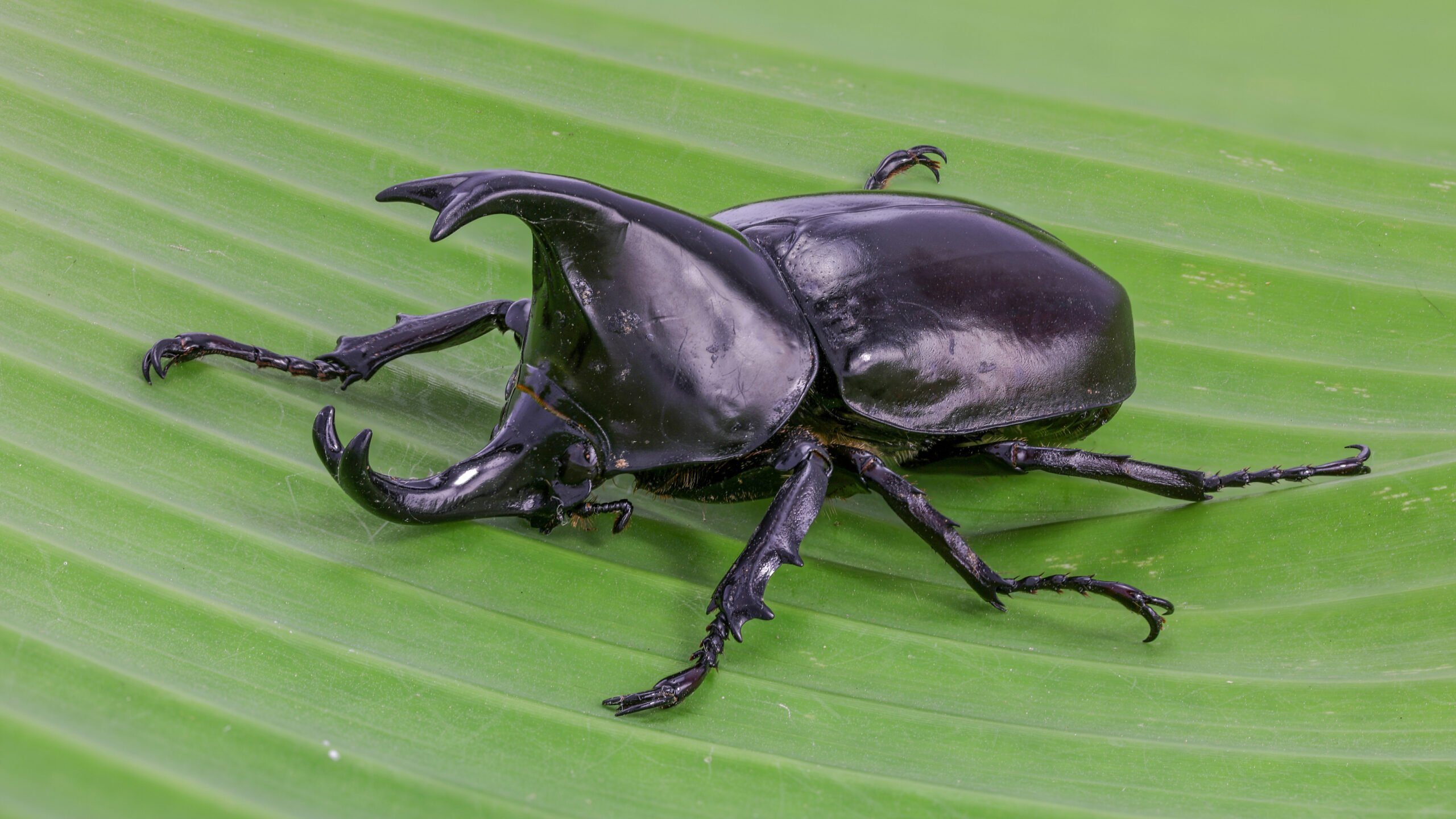
Imagine a rhinoceros beetle the size of a golden retriever, and you’ve got yourself one impressively gentle giant. These creatures are already known for their incredible strength – they can lift objects 850 times their own body weight, making them proportionally stronger than any other animal on Earth. Scale that up to dog size, and you’d have a pet that could literally help you move furniture around the house. But strength isn’t their only appealing quality. Rhinoceros beetles are remarkably docile creatures that rarely show aggression toward humans, even when handled. They’re like the gentle bulldozers of the insect world, preferring to use their impressive horns for show rather than combat. Their slow, deliberate movements would make them perfect for families with children who want a pet that won’t accidentally knock them over during playtime. The main challenge would be their diet – these beetles love rotting wood and fruit, so you’d need to maintain quite the compost pile in your backyard. But imagine the satisfaction of watching your beetle pet methodically work through a pile of fallen branches, essentially doing yard work while enjoying a meal.
The Social Butterfly: Honeybee

A dog-sized honeybee would bring an entirely different energy to pet ownership. These insects are natural communicators, famous for their complex waggle dances that convey information about food sources to their fellow bees. Your honeybee companion might just develop its own way of “talking” to you, perhaps through elaborate flight patterns or gentle buzzing variations. Honeybees are incredibly intelligent and social creatures with remarkable memory capabilities. They can remember human faces, learn complex routes, and even pass cultural knowledge to younger generations. A pet honeybee would likely form strong bonds with family members and might even learn to recognize different people’s approaching footsteps or voices. The fuzzy factor alone would make them irresistible pets. That soft, fluffy appearance combined with their naturally curious and gentle nature would create the perfect cuddle companion. Plus, imagine the backyard barbecues where your pet bee could actually help pollinate your garden while the guests watch in amazement.
The Acrobatic Entertainer: Jumping Spider

If you want a pet with personality plus, look no further than a dog-sized jumping spider. These eight-legged athletes are already the performers of the arachnid world, known for their incredible leaping abilities and almost cat-like curiosity about their surroundings. Scale them up, and you’d have a pet that could literally bounce off the walls – and make it look graceful. Jumping spiders have some of the best vision in the arthropod world, with forward-facing eyes that give them an almost mammalian appearance. They’re naturally inquisitive creatures that will investigate new objects, sounds, and people with the enthusiasm of a puppy exploring a new park. Their hunting style involves stalking and pouncing, which would translate beautifully into interactive play sessions with toys. These spiders also display surprising emotional complexity, showing what appears to be curiosity, caution, and even playfulness in their natural behaviors. A dog-sized jumping spider would likely become the entertainment center of any household, turning every room into its personal jungle gym while forming genuine bonds with family members.
The Loyal Guardian: Praying Mantis
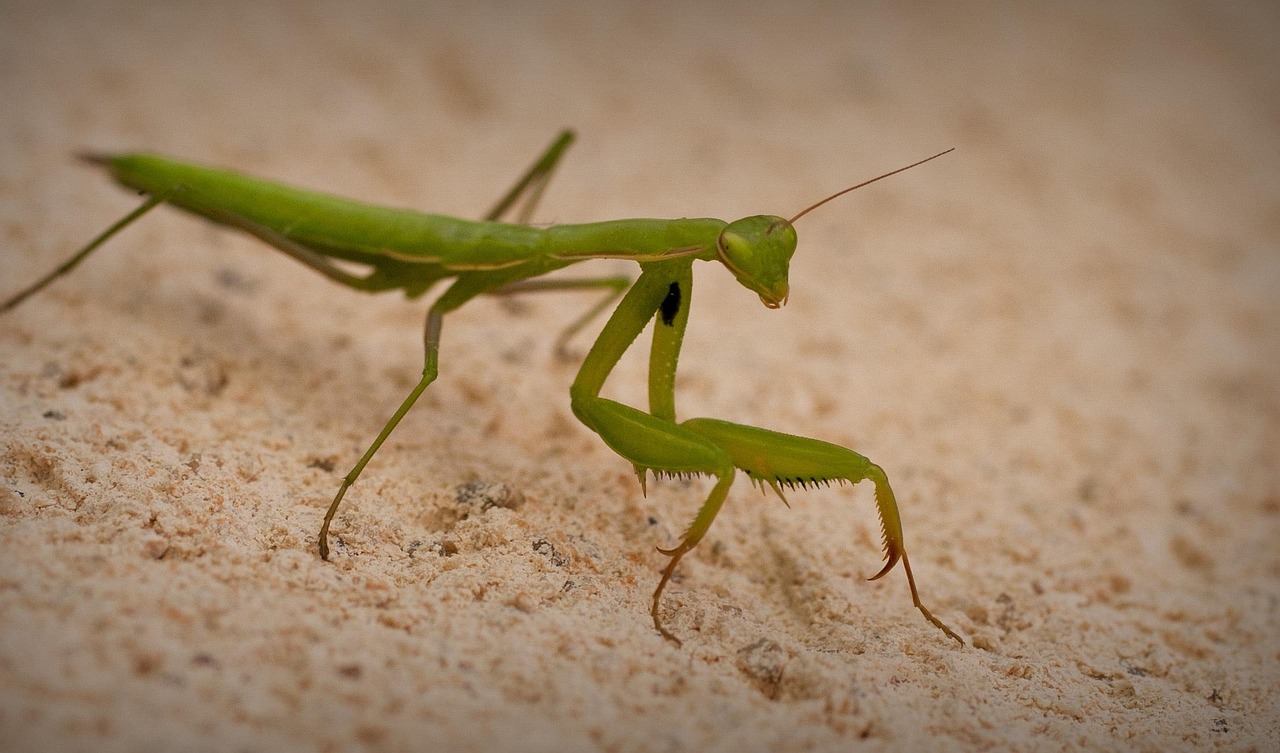
There’s something almost mystical about praying mantises that would make them fascinating pets at dog size. These predators have an incredible ability to remain perfectly still for hours, then strike with lightning speed when the moment is right. Your mantis pet would be like having a living meditation master in your home, teaching you the value of patience and mindful observation. Praying mantises have excellent vision and can track movement with their triangular heads, creating an almost dog-like quality of focused attention. They’re naturally curious about their environment and will often approach humans without fear, especially if they associate people with food or interesting stimuli. This bold personality trait would make them surprisingly interactive pets. The really fascinating aspect would be watching their hunting instincts translate into play behavior. A dog-sized mantis might “hunt” toys with the same focused intensity they use in the wild, creating an entirely new category of pet entertainment. Their alien-like appearance combined with their surprisingly engaging personalities would make them conversation starters wherever they went.
The Industrious Worker: Leafcutter Ant

While individual leafcutter ants might seem like unusual pet candidates, scaled up to dog size, they would become incredibly industrious and purposeful companions. These ants are natural gardeners, cultivating fungus gardens with the precision of master agriculturalists. Your ant pet would likely try to turn your entire backyard into an organized, productive space. Leafcutter ants have an incredible work ethic that puts most humans to shame. They can carry leaf fragments many times their own body weight across considerable distances, all while navigating complex terrain and avoiding predators. A dog-sized leafcutter ant would be like having a personal landscaper who works tirelessly to improve your outdoor space. Their social intelligence is remarkable – in their natural colonies, they communicate through chemical signals and coordinate complex tasks involving thousands of individuals. Your pet ant might develop its own communication system with you, possibly through touch, movement patterns, or even attempts to organize household objects in ways that make sense to its ant logic.
The Elegant Dancer: Dragonfly

Picture a dragonfly with a three-foot wingspan gracefully gliding through your living room, and you’ll understand why these insects would make spectacular pets. Dragonflies are aerial acrobats with flight capabilities that make military jets look clumsy by comparison. They can hover, fly backwards, and make sharp turns that would be impossible for any bird or bat. These ancient insects have compound eyes containing up to 30,000 individual lenses, giving them nearly 360-degree vision and the ability to detect the slightest movement. A pet dragonfly would be incredibly alert and responsive to its environment, possibly even serving as an early warning system for visitors or unusual activities around your home. The challenge would be providing enough space for their aerial lifestyle, but imagine the joy of watching your dragonfly pet perform daily flight shows in your backyard. Their iridescent wings catching sunlight would create natural light displays that would make your neighbors incredibly jealous of your unique companion.
The Colorful Character: Stick Insect

Don’t let their reputation for being motionless fool you – stick insects would make surprisingly engaging pets at dog size. These masters of camouflage have personalities that are much more complex than their still-as-a-branch reputation suggests. Many species are actually quite active during their preferred times, moving with deliberate grace through their environment. Stick insects have an almost zen-like quality that would make them perfect therapy pets. Their slow, methodical movements and peaceful demeanor could provide a calming presence in stressful households. Some species even sway gently like leaves in a breeze, creating a natural meditation focus for their human companions. The really surprising aspect of dog-sized stick insects would be their interactive potential. Many species respond to gentle handling and can recognize familiar people. Your stick insect pet might develop preferences for certain family members or show excitement when favorite people return home, all expressed through subtle changes in posture and movement patterns.
The Armored Companion: Pill Bug

Technically a crustacean rather than an insect, pill bugs (or roly-polies) would make incredibly endearing pets at dog size. Their ability to roll into a perfect ball when startled would make them living stress balls – imagine coming home after a tough day and having your pet curl up into a smooth, gray sphere that you could gently roll around the yard. Pill bugs are naturally social creatures that often congregate in groups under logs or stones. A pet pill bug would likely enjoy the company of humans and might even seek out physical contact for warmth and security. Their armored appearance would make them look like tiny tanks, but their gentle nature would quickly reveal their teddy bear personalities. These creatures are also fantastic decomposers, helping break down organic matter in their environment. Your pill bug pet could help maintain your compost pile while getting exercise and enrichment. Plus, their natural tendency to clean up dead plant material would make them the ultimate low-maintenance lawn care assistants.
The Nocturnal Hunter: Cicada

A dog-sized cicada would bring a completely different energy to pet ownership, especially during their active periods. These insects are famous for their incredibly loud calls – the males can produce sounds reaching 120 decibels to attract mates. Your cicada pet would certainly make sure the whole neighborhood knew when it was feeling social or excited. Cicadas have fascinating life cycles, spending years underground before emerging for their brief adult phase. This would make them incredibly special pets, as you’d literally be caring for a creature that represents patience and transformation. Their emergence would be like celebrating a birthday that comes once every few years rather than annually. The most remarkable aspect would be their musical abilities. Different cicada species produce distinct songs, and your pet might learn to modulate its calls based on your household’s schedule. Imagine having a natural alarm clock that could be trained to wake you up with gentle morning songs, or a pet that announces visitors with its own unique doorbell melody.
The Aquatic Athlete: Water Strider

While most people think of land-based pets, a dog-sized water strider would open up entirely new possibilities for aquatic companionship. These insects literally walk on water using surface tension, making them the ultimate pool companions. Your water strider pet could glide across your swimming pool or pond with the grace of an ice skater, never breaking the surface. Water striders are incredible hunters with lightning-fast reflexes. They detect prey through vibrations on the water’s surface, essentially reading the water like a complex musical score. A pet water strider would be incredibly responsive to movement and might even learn to play water-based games with family members. The really exciting part would be swimming with your water strider companion. While you’d be splashing around underwater, your pet would be gracefully skating above you on the surface, creating an entirely unique form of aquatic partnership. Pool parties would never be the same when guests see your pet literally dancing on water.
The Underground Explorer: Mole Cricket

Mole crickets would make fascinating pets for families who enjoy unique, underground adventures. These insects are natural diggers with powerful front legs designed for tunneling through soil. A dog-sized mole cricket would transform your yard into an elaborate underground network of tunnels, creating a natural playground for both pet and family. These crickets are surprisingly musical, producing calls that resonate through their tunnel systems to attract mates. Your mole cricket pet might develop its own communication songs, possibly creating different melodies to express hunger, happiness, or the desire to play. The underground acoustics would turn your entire yard into a natural amphitheater. The most practical benefit would be natural yard aeration. While your mole cricket explores and expands its tunnel network, it would be improving soil drainage and root growth for your plants. You’d essentially have a pet that doubles as a landscaping service, working tirelessly to improve your property while enjoying its natural digging instincts.
The Protective Parent: Earwig

Despite their somewhat intimidating name and appearance, earwigs would actually make surprisingly devoted pets. These insects are among the few that show genuine parental care, with mothers protecting and feeding their young with remarkable dedication. A dog-sized earwig would likely extend this protective instinct to human family members, especially children. Earwigs are nocturnal creatures with an interesting mix of fierce appearance and gentle behavior. Their prominent pincers look threatening but are actually used more for defense and food handling than aggression. Your earwig pet would probably spend days hiding in cool, dark spaces and become active during evening hours for play and interaction. The really endearing quality would be their maternal instincts. Female earwigs have been observed cleaning their eggs, feeding their young, and defending their families against much larger predators. A pet earwig might try to “parent” household objects, carefully arranging and protecting items it considers important to the family’s wellbeing.
The Social Organizer: Termite

While individual termites might seem like odd pet choices, scaled up to dog size, they would become incredibly organized and purposeful companions. Termites are master builders and social coordinators, capable of constructing elaborate structures that rival human architecture in complexity and efficiency. Your termite pet would likely try to reorganize your entire house according to its own logical systems. These insects have incredible teamwork abilities and communication skills, using chemical signals and vibrations to coordinate complex tasks. A pet termite might develop its own methods of organizing household items, possibly creating efficient storage systems that put professional organizers to shame. They might even try to “improve” furniture arrangement based on their understanding of structural engineering. The most impressive aspect would be their construction abilities. Given appropriate materials, your termite pet might build elaborate structures in your backyard, creating natural climbing gyms, weather shelters, or even artistic installations. Their natural instinct to improve their environment would make them active partners in home improvement projects.
The Graceful Flyer: Lacewing

Dog-sized lacewings would be like having fairy tale creatures as pets. These insects have delicate, translucent wings with intricate vein patterns that create natural stained glass windows when backlit by sunlight. Their ethereal appearance combined with their gentle flying style would make them the most photogenic pets imaginable. Lacewings are beneficial predators that help control garden pests, but they do so with remarkable precision and grace. A pet lacewing would likely patrol your garden like a gentle guardian, keeping harmful insects at bay while never disturbing beneficial pollinators. Their hunting style is more like elegant dancing than aggressive predation. The really magical quality would be their nighttime behavior. Many lacewing species are attracted to lights and have beautiful, moth-like flight patterns around illumination sources. Evening walks with your lacewing pet would become enchanting experiences as it performs aerial ballets around streetlights and porch lamps, creating living light shows wherever you go.
Which Would Actually Win Your Heart?
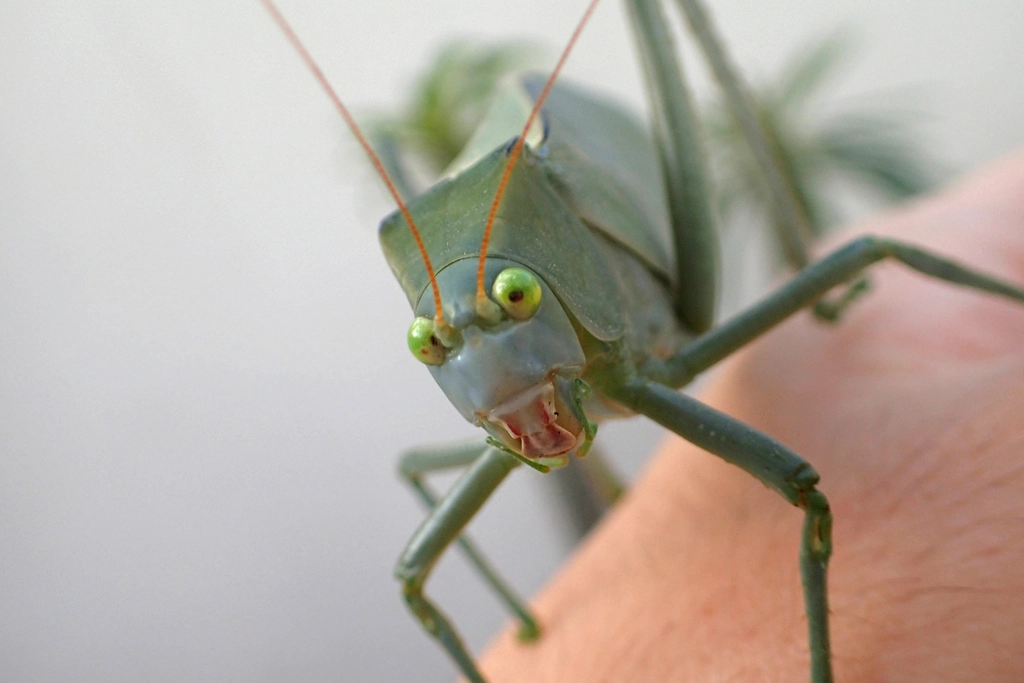
After exploring all these fascinating possibilities, the question remains: which insect would truly make the best dog-sized pet? The answer probably depends on your lifestyle and personality preferences. Active families might gravitate toward the jumping spider’s acrobatic entertainment or the dragonfly’s aerial grace. Those seeking calm companionship might prefer the meditative presence of a stick insect or the gentle strength of a rhinoceros beetle. The most practical choice might actually be the honeybee, combining intelligence, social bonding, fuzzy appeal, and genuine usefulness in pollinating your garden. But the most entertaining option could be the jumping spider, with its natural curiosity and athletic abilities creating endless opportunities for interactive play and amazement.
Conclusion
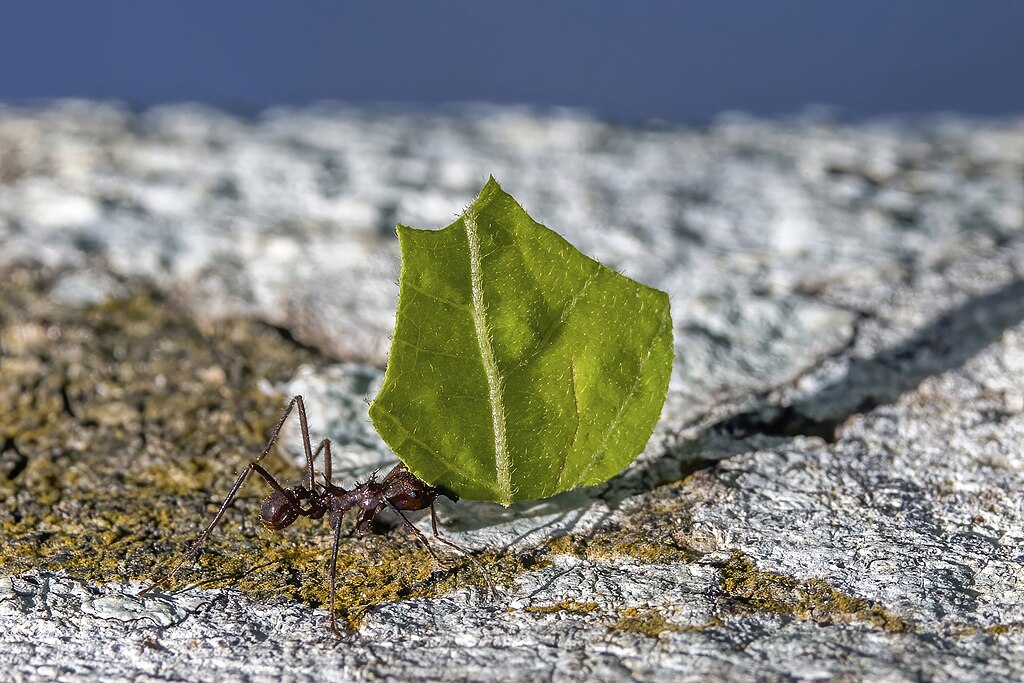
What’s truly remarkable is how this thought experiment reveals the incredible diversity of personalities and behaviors that exist in the insect world. These tiny creatures display loyalty, intelligence, creativity, and social bonds that rival many traditional pets. Perhaps the real question isn’t which insect would make the best pet, but why we limit ourselves to thinking of companionship in such narrow terms. The next time you see a beetle trundling across your sidewalk or watch a spider carefully constructing its web, remember that you’re witnessing complex behaviors and personalities that could, in another size and context, become the foundation of remarkable interspecies friendships. Who knows what we might discover about animal intelligence and companionship if we opened our minds to the full spectrum of life on our planet?

